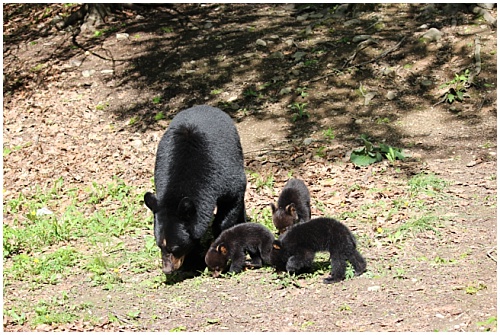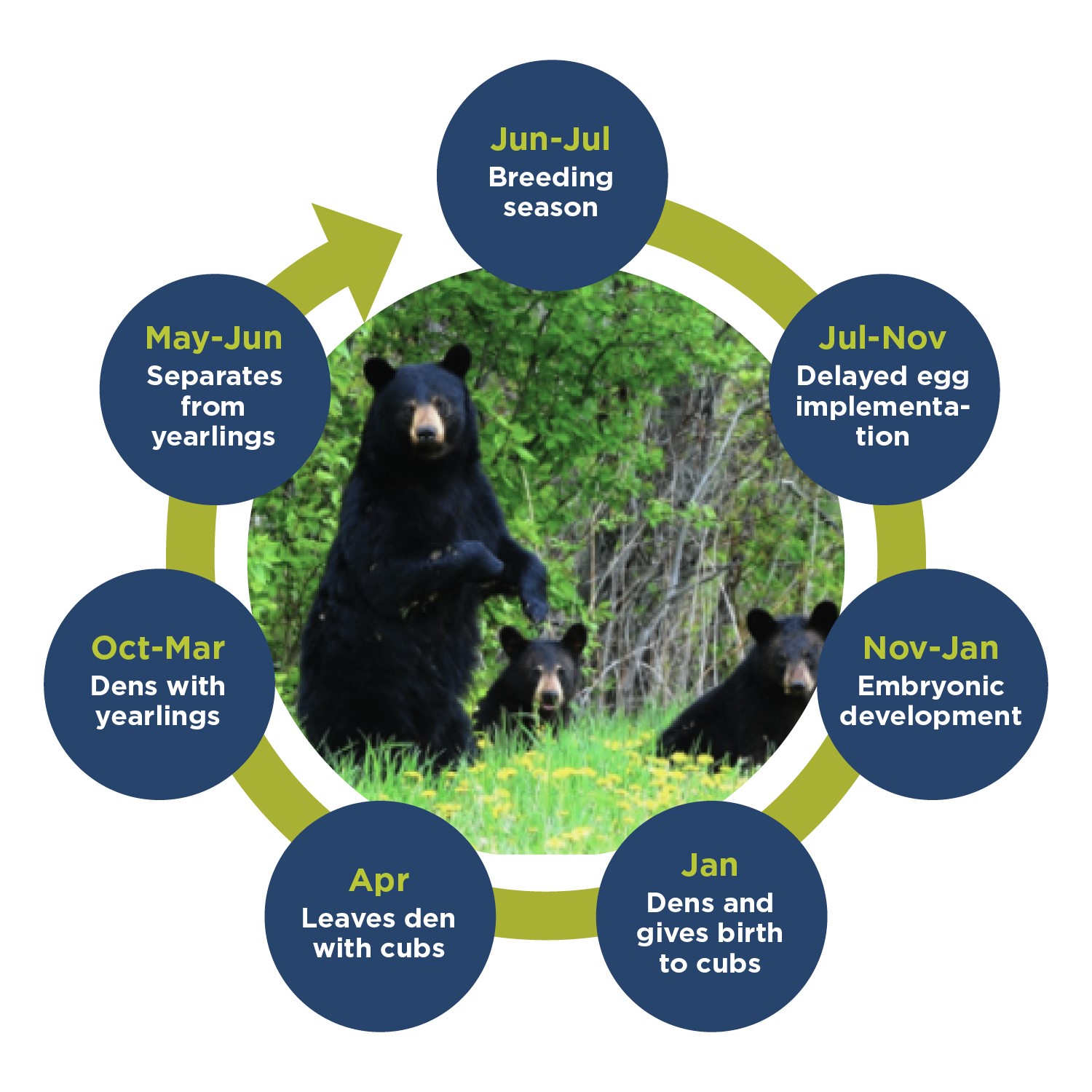November 23, 2021 at 8:24 am
All wildlife have unique adaptations to ensure survival. From changing color with the seasons, flying a 2,500-mile migration, or having bodies that can tolerate freezing, most adaptations are nothing short of astonishing, and these extraordinary characteristics often mean life or death.

For black bears, surviving the winter means finding a cozy den to avoid freezing temperatures for months, and letting their body conserve energy through a series of metabolic changes during their period of inactivity, called torpor. While torpor may be enough to wow you, some female black bears do so while balancing the vital responsibility of reproducing, enduring an even greater tax on their body.
From spring to fall each year, black bears consume everything they can to replenish the energy lost during the winter months and to bulk up for the next denning season. Black bears primarily eat plant material and fruits, but they will consume insects, larvae, carrion, and if given the chance, garbage, bird seed, and other high caloric foods.
On top of bulking up for the next denning season, sexually mature bears are also trying to mate. Typically, sows (adult female black bears) become sexually mature around the age of three, but it greatly depends on the availability and quality of food. If a sow successfully mates between the months of May and July, the sperm will fertilize the eggs, quickly developing into blastocysts (a dividing ball of cells that will later become an embryo).

Then, she’ll experience embryonic diapause. This means that the pregnancy is put on pause; the ball of cells will no longer develop, and they will not implant onto the uterine wall until November. Believe it or not, many animals are capable of diapause in order to wait until environmental conditions are more favorable for giving birth and raising young. In the case of a black bear, it is imperative that the mother gains significant weight and fat so her body can produce nutrition for her young during the cold winter months when food is unavailable.
If the mother black bear is well fed and has acquired the weight and fat content she needs, the embryos will implant around the month of November. In January after about 8 weeks of development, the mother will give birth to one to four cubs. Cubs weigh eight to 12 ounces, are covered in fine hair, and blind. The sow provides milk to her young which is 20-25% fat, beefing her cubs up to four to 10 pounds by mid to late April. The cubs remain with their mother for 16-18 months, causing her to skip the following breeding season to care for her current young.
As we head into the winter months, Maine’s female black bears are searching for a den to protect themselves and anticipated cubs for the next several months. This unique adaptation to delay development of young in the summer and fall is an important survival mechanism. It prevents starvation of her potential young if her body isn’t adequately prepared, and ensures the survival of the female, whose reserves are being used for milk production. When the sow and cubs emerge in the spring, the cubs typically weigh around five lbs., capable and ready to roam and forage with mom.